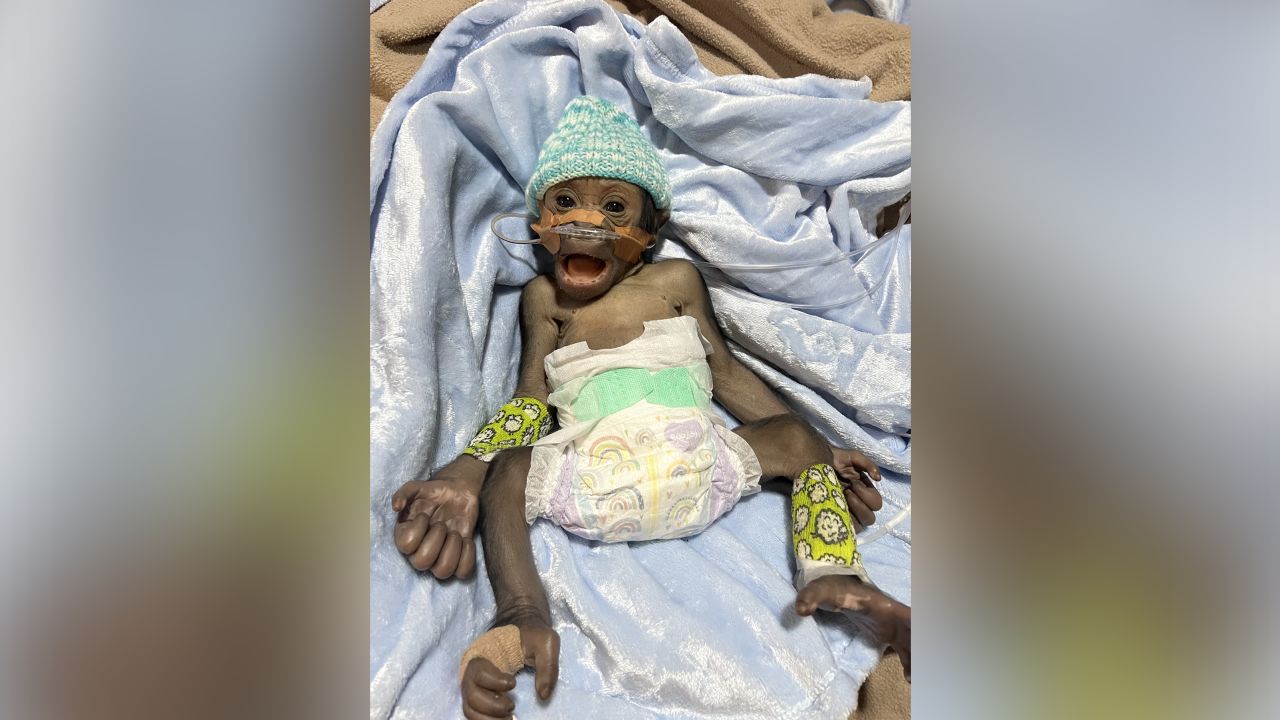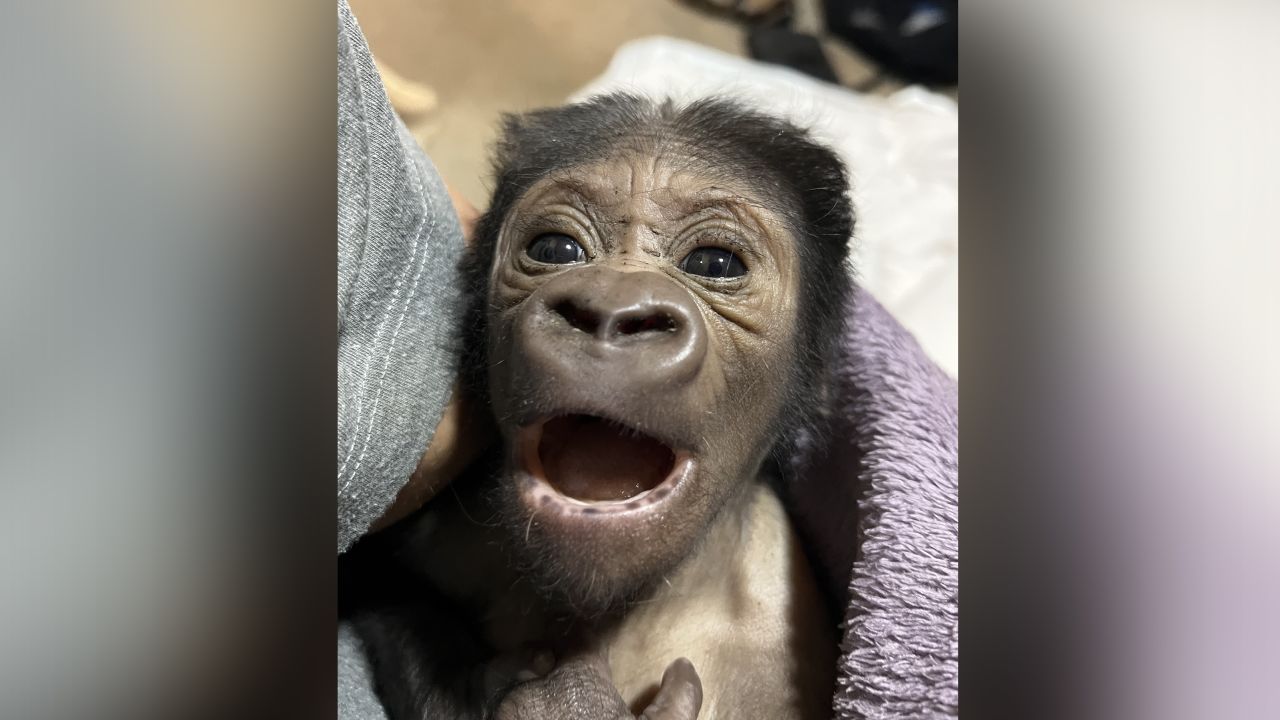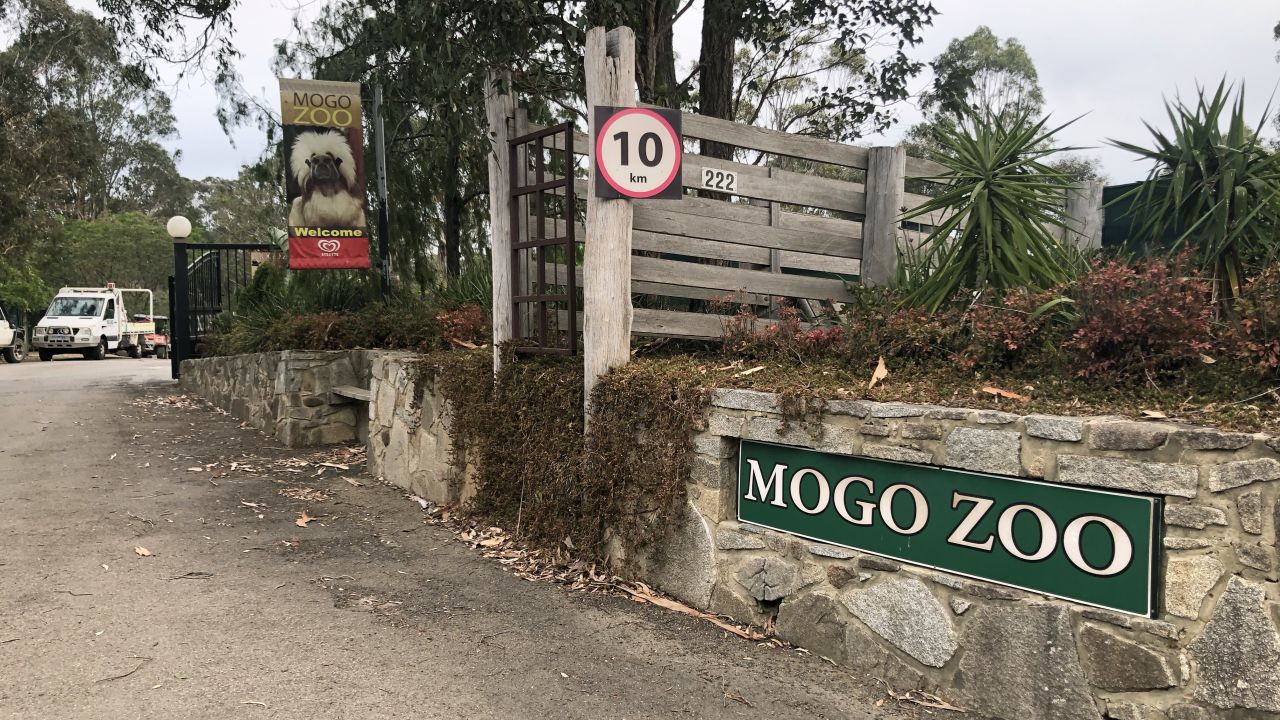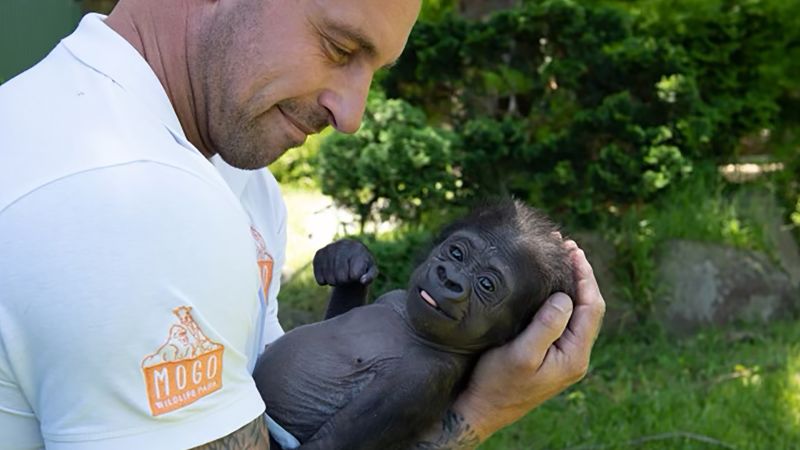Brisbane, Australia
CNN
—
In many ways, raising a baby gorilla is very similar to nurturing human newborns, says Chad Staples, a father of four and the director of Mogo Wildlife Park, a small private zoo in the town of the same name on Australia’s southeastern coast.
“The similarities are amazing. Even just looking at his eyes, it’s just like when you look at a newborn and they just take in the whole universe with every blink,” Staples told CNN of Kaius, the wide-eyed baby gorilla he’s reared from birth.
In the early months, Kaius slept in Staples’ bedroom, and the zookeeper regularly fed him milk and changed his diapers – a difficult task to perform on a primate that’s much stronger than a human baby and able to grip with both his hands and feet.
“With a baby, you’ve only got to deal with some little hands that might help, but with a gorilla, he was really right into making it very difficult,” he said. “I just laughed I thought, ‘Oh my goodness.’”
As he got older, Kaius would cling to the zookeeper’s back as they walked around the zoo.
Then on Friday, Staples watched with wonder – but mostly relief – as 10-month-old Kaius shared a breakfast of sweet potatoes and tomatoes with G-Anne, an unrelated 42-year-old female gorilla, who for now seems happy to assume parenting duties in the zoo’s gorilla house.
“It makes me so happy to see the two of them together now,” Staples said. “It’s been a hell of a journey.”
Kaius was born at the wildlife park last October to first-time parents, 10-year-old mother Kipensi and 17-year-old father Kisane, a hulking silverback weighing some 220 kilograms (485 pounds).
Newborn gorillas are typically smaller than full-term human babies, and at 2.2 kilograms (4.85 pounds), Kaius seemed to be doing well – until Kisane, a giant compared to his tiny newborn, took the infant from his mother.
“It was terrifying because you just wondered if he was going to do something stupid,” Staples said. “He was actually holding the baby quite gently. But you know, Kaius was just over 2 kilos … so it’s just this huge size difference.”
For 14 hours, zoo staff tried to coax Kisane to give the baby back – offering food that he’d need two hands to grip and moving females – Kipensi and her mother Kriba – into different areas of the gorilla house so he’d follow them and put the baby down.
“We’re not really ever going to know why but I like to think that maybe dad just tried to get involved because he saw that there was something wrong with mom,” Staples said.
Kipensi had failed to pass the placenta, a concern for veterinarians who worried about the risk of infection, and she didn’t demand her partner return the baby, as Staples said she might have been expected to do in the wild.
Eventually, Kisane put down the baby and zoo staff rushed in to grab him. By then, the infant was hungry, so they fed him a bottle and attempted to give him back to his mother and grandmother the next day.
“They basically walked straight over to him, looked at him and then walked away,” Staples said. “And then they proceeded to step over him to get food and were sort of interested but not interested like we really had expected.”
Zoo staff had intended to feed him and try again, but when Staples picked him up, he said, “his demeanor changed.”
“He’d lost color, looking very dull in the eyes, and so we rushed him up to the vet block, and he proceeded to crash quite quickly.”

Kaius, then still just a day old, was diagnosed with sepsis pneumonia.
“He crashed probably half a dozen times where he was basically revived and you know, shots of adrenaline and all this stuff to get his little body going again,” Staples said.
“The vets were talking about euthanasia. Doctors were talking about him probably not making it through the night.”
So Staples sat up all night with the tiny gorilla sleeping on his chest.
“That was what gave him the most comfort and actually got his heart rate and breathing under control, just that skin to skin contact and feeling the heartbeat like he would from his mom.”

Then Kaius started getting better – and growing.
The diapers were abandoned when they started going outside more, then came the process of introducing other zoo workers, so Kaius wouldn’t get too attached to his main carer.
Kaius moved from Staples’ house – which is inside the zoo – to the gorilla enclosure, in a pen neighboring G-Anne, his new adoptive mom.
The aim was to get the two of them to interact enough that they would eventually share an enclosure. But resettling a baby gorilla comes with tremendous risk.
His biggest fear? “The gorilla would just kill him. Because that’s happened with gorillas and chimps around the world,” Staples said.

Two days in and those fears have receded as G-Anne has taken to her new role.
“She’s a beautiful girl and she’s always shown signs that she wanted this as much as what we did,” he said. “I’m not worried about that anymore. You know, it’s always in the back of your head. You know, what if? But not like it was.”
For now, the pair will spend some time together before Kaius is ready to make his public debut at the zoo, which also houses a giraffe, zebra, lions, tigers and lemurs.
Staples says Kaius seems to recognize him and he hopes the connection lasts.
“Once I’m close, he really pushes his face into mine and big beautiful breaths, holds on tight, you know, tries to kiss, all these sorts of beautiful things,” Staples said.
“I do hope that there’s a bond there for his life. It’d be pretty special.”
Sumber: www.cnn.com






